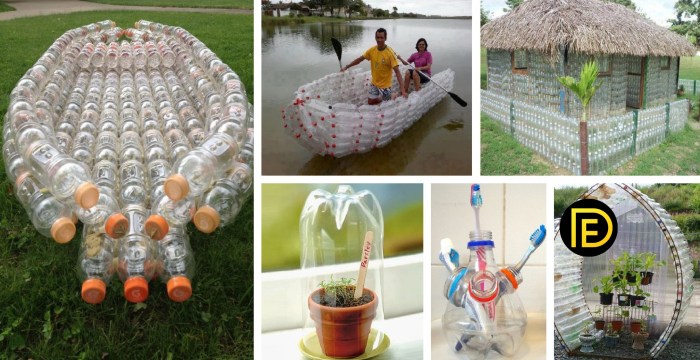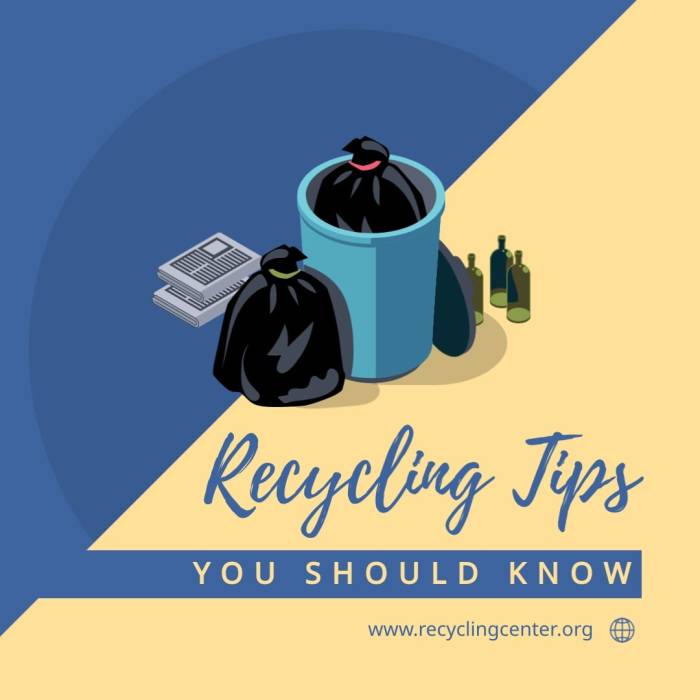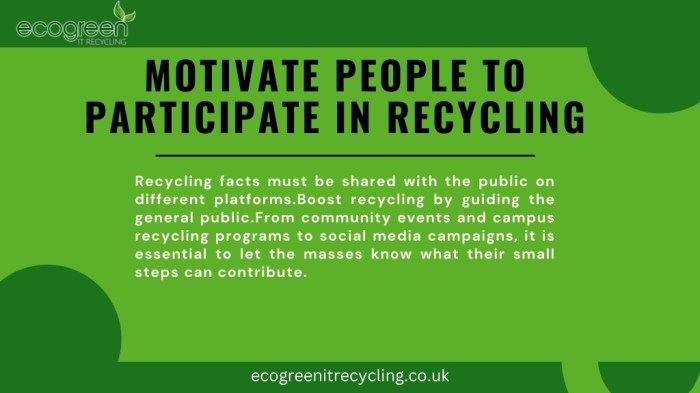Embark on a journey towards a greener future with 100 Recycling Tips to Make a Positive Impact. This comprehensive guide is packed with practical advice and creative ideas to help you make a difference in the world through recycling and upcycling.
Discover the environmental benefits, learn how to sort recyclables effectively, and explore innovative ways to repurpose everyday items for a more sustainable lifestyle.
Benefits of Recycling

Recycling plays a crucial role in protecting the environment and conserving natural resources. By recycling, we can reduce the amount of waste that ends up in landfills, minimize pollution, and decrease the extraction of raw materials. This leads to a cleaner, healthier planet for current and future generations.
Environmental Impact of Recycling
Recycling helps to conserve energy and reduce greenhouse gas emissions. For example, recycling aluminum cans saves up to 95% of the energy needed to produce new cans from raw materials. This process also helps to reduce air and water pollution associated with mining and manufacturing.
Materials that Can be Recycled
Various materials can be recycled, including paper, plastics, glass, metal, and electronics. Recycling these materials helps to save energy, reduce the need for virgin resources, and decrease the carbon footprint associated with their production. For instance, recycling one ton of paper can save 17 trees, 7,000 gallons of water, and 463 gallons of oil.
Reducing Waste in Landfills
Recycling helps to divert waste from landfills, reducing the pressure on these sites and prolonging their lifespan. By recycling, we can prevent valuable materials from being buried and wasted, ultimately conserving space and reducing the environmental impact of landfill sites.
Practical Recycling Tips

When it comes to recycling, proper sorting of recyclables is crucial to ensure that materials are processed correctly and efficiently. By following some simple tips, you can make a positive impact on the environment and help reduce waste.
How to Properly Sort Recyclables
- Check with your local recycling facility or municipality to understand their guidelines on sorting recyclables.
- Separate materials like paper, cardboard, plastics, glass, and metals into designated bins or containers.
- Rinse out food containers before recycling to prevent contamination and odors.
- Remove any non-recyclable items or contaminants from the recyclables to avoid contamination.
- Flatten cardboard boxes and containers to save space and make transportation more efficient.
Common Items Overlooked for Recycling
- Batteries: Rechargeable batteries and single-use batteries can often be recycled at designated drop-off locations.
- Electronics: Old electronics like cell phones, laptops, and printers can be recycled to recover valuable materials.
- Clothing and Textiles: Donate or recycle old clothing and textiles to reduce waste and extend their lifecycle.
- Plastic Bags: Many grocery stores accept plastic bags for recycling to prevent them from ending up in landfills.
Benefits of Composting Organic Waste
Composting organic waste, such as food scraps and yard waste, has numerous benefits for the environment and can help reduce greenhouse gas emissions. By turning organic waste into nutrient-rich compost, you can enrich soil, reduce the need for chemical fertilizers, and divert waste from landfills. Composting is a sustainable practice that can support healthy plant growth and contribute to a greener and more eco-friendly community.
Creative Upcycling Ideas

Looking for ways to repurpose household items for a sustainable lifestyle? Get inspired by these creative upcycling ideas that not only help reduce waste but also add a unique touch to your home decor.
DIY Upcycled Planters
Instead of buying new planters, why not upcycle old cans, jars, or even broken teacups? These items can be painted, decorated, and transformed into charming planters for your indoor or outdoor garden.
- Use old tin cans as herb planters on your kitchen windowsill.
- Turn glass jars into succulent planters by adding pebbles and soil.
- Repurpose chipped teacups as mini plant pots for small flowers.
Upcycled Furniture Projects
Give old furniture a new lease on life by upcycling them with a fresh coat of paint, new upholstery, or creative embellishments. Not only does this save money, but it also reduces the demand for new furniture production.
- Transform an old dresser into a stylish kitchen island with a fresh paint job.
- Upcycle wooden pallets into a rustic coffee table for your living room.
- Repurpose a ladder as a unique bookshelf by adding wooden planks.
Repurposed Clothing and Accessories
Instead of throwing out old clothes or accessories, consider upcycling them into new fashion pieces. From turning jeans into shorts to creating statement jewelry from broken pieces, the possibilities are endless.
- Transform an oversized shirt into a trendy crop top by cutting and tying the fabric.
- Upcycle old denim jeans into a stylish denim skirt by sewing and hemming the edges.
- Create unique earrings or necklaces from broken or mismatched jewelry pieces.
Closure

Take the first step towards a more eco-friendly lifestyle by implementing these recycling tips into your daily routine. Together, we can make a positive impact on the planet and create a cleaner, healthier world for future generations.